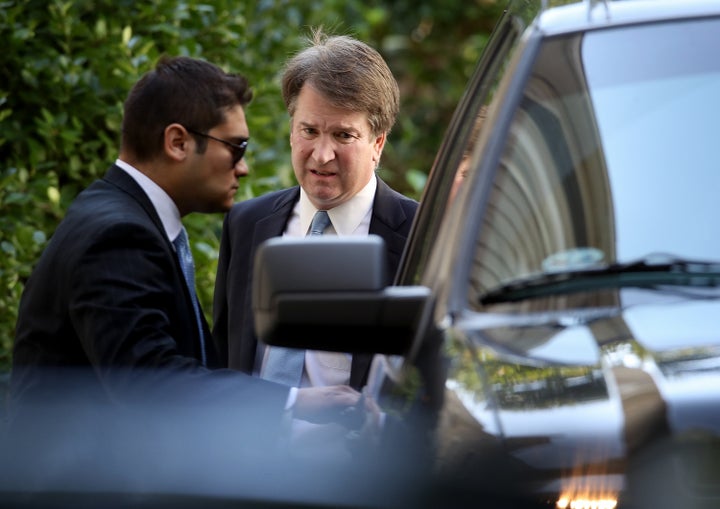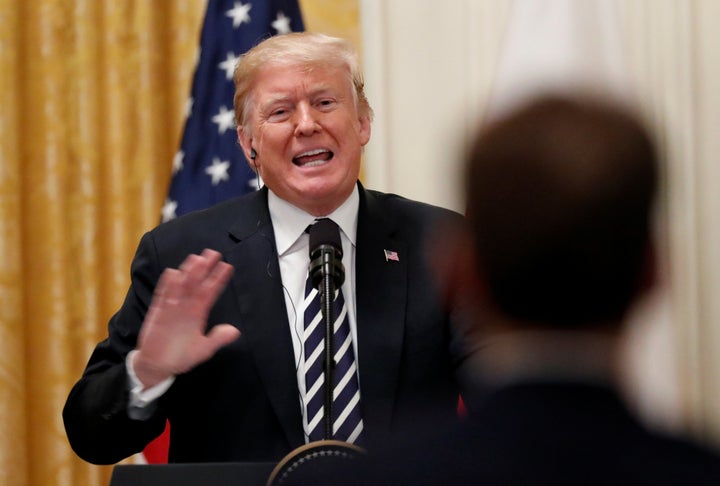Glance at any US newspaper or website right now and chances are one name will feature at the very top – Brett Kavanaugh.
Just a few weeks ago the 53-year-old’s future looked fairly clear – Donald Trump had nominated him to the US Supreme Court to replace retiring Justice Anthony Kennedy and his confirmation looked like a matter of procedure.
Then a psychology professor at Palo Alto University dropped a bombshell allegation.
Her name is Christine Blasey Ford, and today she will appear in front of the Senate Judiciary Committee to testify at a potentially explosive hearing about her allegation – just weeks before congressional mid-term elections that will decide the balance of power in Congress.

What’s The Allegation?
Christine Blasey Ford said Kavanaugh sexually assaulted her in 1982 when both were high school students in Maryland.
She said she was 15 when she attended a party where she encountered Kavanaugh, who was 17 at the time. He and his friend shut her in a room and turned up the music to hide her protests as he assaulted her and covered her mouth to stifle her screams.
Kavanaugh called Ford’s allegation “completely false.”
How Will The Hearing Work?
After opening statements from the two lead Republican and Democrat members, Ford will deliver a pre-prepared written statement to the Senate Judiciary Committee.
All 21 senators taking part will then be given five minutes each to ask her questions. The 11 Republican senators - who are all male - will defer their questions to lawyer, Rachel Mitchell.
When Ford’s questioning is over, Kavanaugh will enter the room and do the same; offering a pre-prepared statement before facing questions.
On Friday, the committee will vote on whether to confirm Kavanaugh’s Supreme Court nomination. If they do, it’ll go to the Senate for a full vote.
Have There Been Other Accusations?
Yes. In the week since Ford came forward, two other women have accused Kavanaugh of sexual conduct.
Deborah Ramirez alleges that he exposed himself to her and thrust his penis in her face during a party when they were students at Yale University in the early 1980s. She says she was afraid to come forward at the time as she had been drinking when the incident allegedly took place. He has denied the allegation.
Julie Swetnick was the third woman to come forward. In a signed declaration released by her lawyer, she said Kavanaugh was present at a 1982 party where she was gang raped, but didn’t identify him as an assailant.
Through her lawyer, Michael Avenatti, Swetnick is asking for the opportunity to speak in front of the committee, as Ford is.
Why Is The Supreme Court Appointment A Big Deal?
The Supreme Court essentially gets the final say on the most important and often most controversial and divisive issues in the USA.
There are nine judges and each serves for life unless they resign, retire or are impeached.
New judges are nominated by the President and confirmed by the Senate, meaning replacements are usually liberal or conservative depending on who is in power when they step down.
The life tenure of judges means Presidents can shape US policy for decades after their terms end. Kennedy was nominated by Republican President Ronald Reagan in 1987.
“We have to pick a great one. We have to pick one that’s going to be there for 40 years, 45 years,” Trump told supporters at a rally in Fargo, North Dakota, earlier this year.
Hasn’t Trump Already Done This?
One of Trump’s first major acts as President was to appoint the conservative Neil Gorsuch to the Supreme Court.
The Court’s recent decision to uphold Trump’s controversial travel ban - nationals of Iran, Libya, Somalia, Syria and Yemen were barred entering the US - by a vote of 5-4 was seen as a vindication of his choice.

What’s The Current Make-Up Of The Court?
The court has four justices picked by Democratic Presidents and four picked by Republicans.
Gorsuch’s appointment meant the court consisted of five conservatives and four liberals. Kennedy often swung in his decisions and sided with the liberals on a number of votes, although not in recent months.
Led by Chief Justice John Roberts, the court during its term that started in October and ended on Wednesday repeatedly ruled for Trump on 5-4 votes, with its four liberals dissenting.
The other two older justices, Ruth Bader Ginsburg, 85, and Stephen Breyer, 79, are Democratic appointees who would not appear to be going anywhere during a Trump administration if they can help it.
What Has Trump Said?
Trump is backing his man while simultaneously attacking Ford’s credibility.
He said on Friday that Kavanaugh was “under assault” by radical leftist politicians, appearing to grow impatient with the delay of his appointee’s confirmation proceedings.
Trump sent more tweets after the second and third accusations too, claiming the accusations are part of Democrats’ “vicious efforts to destrop a fine person”:
When Swetnick came forward, he attacked her lawyer:
What’s The Even Bigger Picture?
Even before Ford’s allegation, Democrats were experiencing a surge in support that is predicted to allow them to take over both the Senate and the House, meaning Trump will struggle to push through legislation.
Ford’s testimony could be a rallying point for democratic voters, persuading them to go out and vote in the mid-terms, which usually have a much lower turnout overall than presidential elections.
